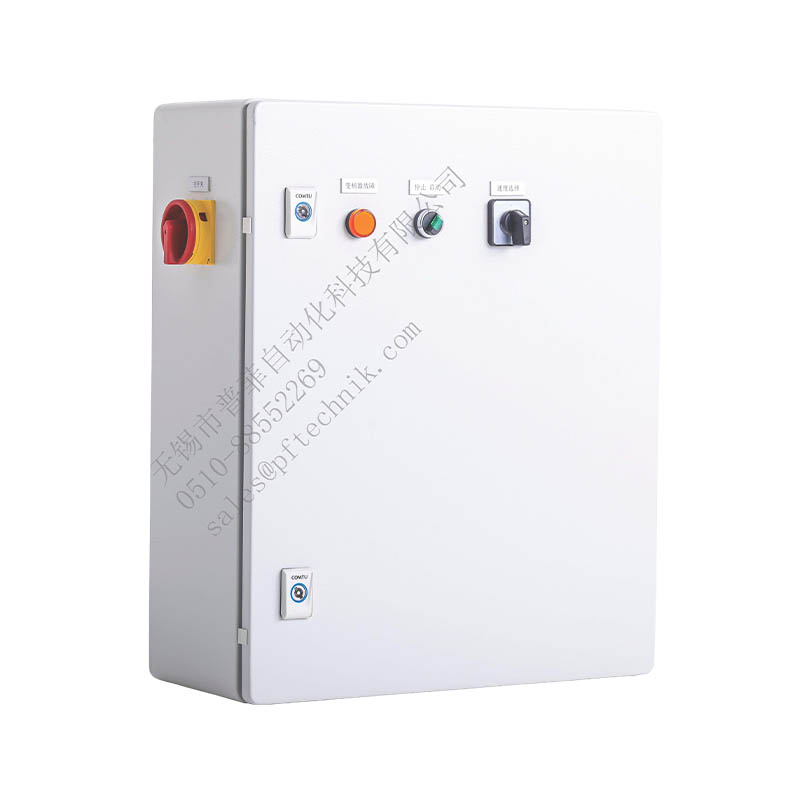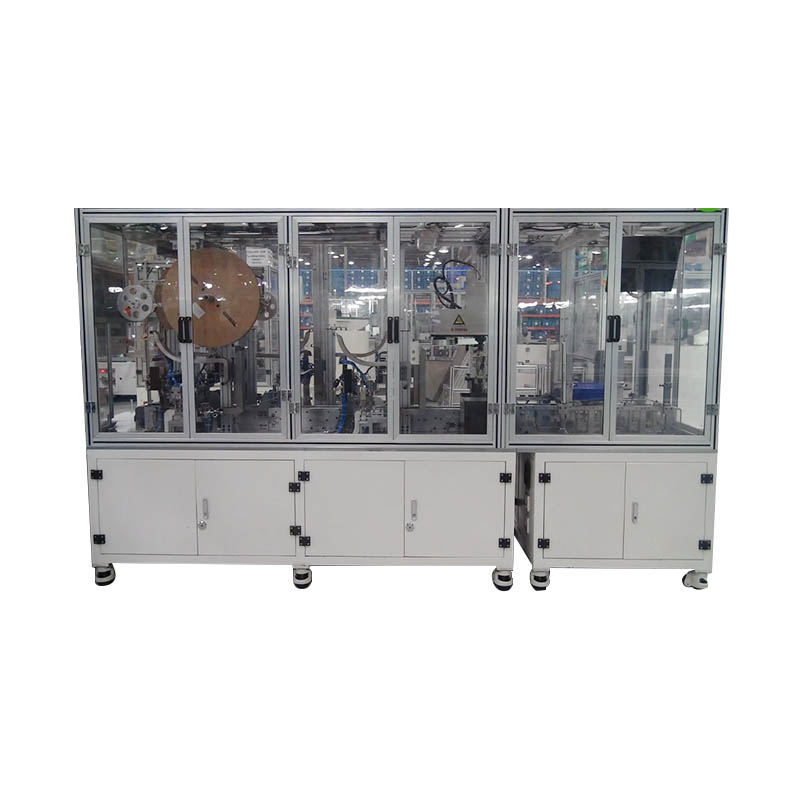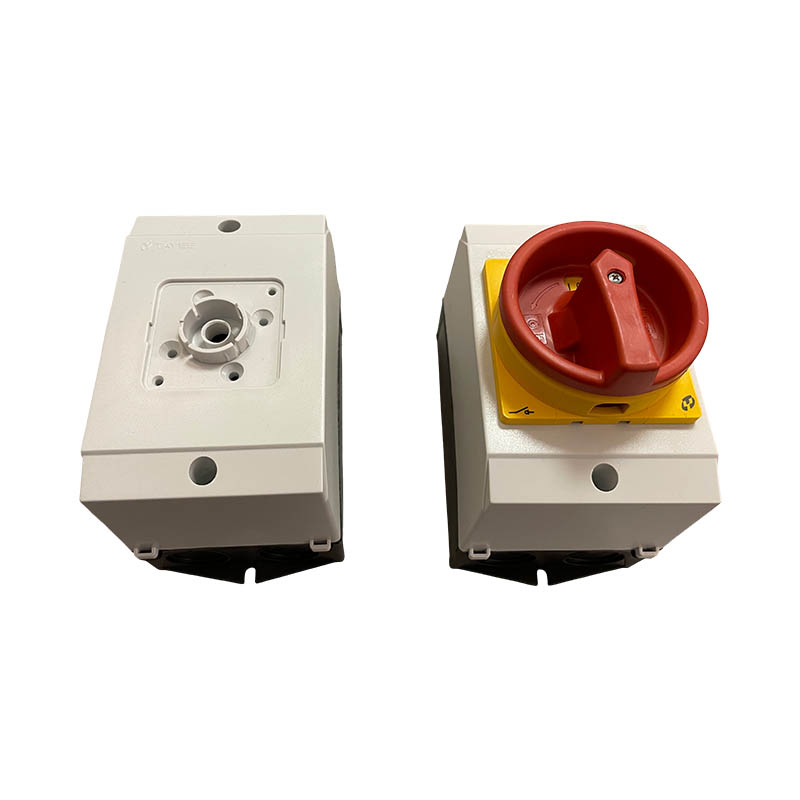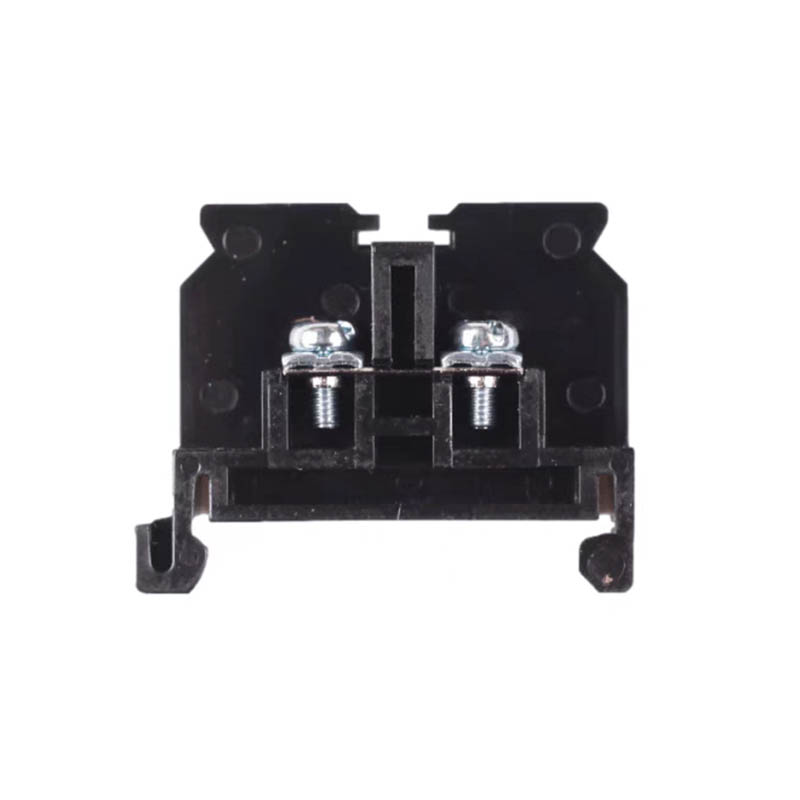How can low-voltage electrical cabinet wiring terminals ensure circuit stability in high-vibration industrial environments?
Release Time : 2025-09-29
Low-voltage electrical cabinets serve as the core unit for power distribution and control. The reliability of the cabinet wiring terminals within them is directly related to the stable operation of the entire electrical system. If a cabinet wiring terminal becomes loose due to vibration, it can lead to signal interruption and control failure at best, or even increased contact resistance, localized overheating, sparks, and even fire. Therefore, ensuring the stability of cabinet wiring terminal connections in high-vibration environments has become a key issue in electrical design and maintenance.
1. Selecting Vibration-Resistant Cabinet Wiring Terminals: Improving Connection Reliability from the Source
Traditional screw-type cabinet wiring terminals are prone to mechanical loosening under continuous vibration, resulting in wire disconnection or poor contact. Therefore, vibration-resistant terminals designed specifically for high-vibration environments, such as spring-loaded terminals or double-clip terminals, should be preferred. Spring-loaded terminals utilize a high-strength metal spring to provide constant pressure, clamping the conductors. They offer excellent shock resistance and are maintenance-free. They maintain stable contact force even under frequent vibration and are easy to operate, making them suitable for connecting multi-strand flexible cables. Furthermore, some high-end terminals utilize a "double screw" or "screw + clamp" structure. This increases the crimping area and features a locking mechanism to prevent the screws from loosening, significantly improving the durability of the connection.
2. Standardized Wiring Procedures: Eliminate Risks Caused by Human Error
Even the best terminals will perform poorly if improperly installed. In high-vibration environments, standardized wiring procedures must be strictly adhered to. First, wire stripping lengths should be appropriate. Excessive lengths can expose exposed areas and cause short circuits, while excessive lengths can result in inadequate crimping. Second, multi-strand flexible cables must be crimped using cold-pressed terminals, and the crimping tool must be matched to the terminal specifications to avoid inadequate crimping or damage to the wire cores. It is strictly forbidden to directly screw multiple wires together and insert them into the same terminal hole. For screw-type terminals, tighten them using a torque screwdriver to the manufacturer's specified torque. Avoid overtightening, which can cause thread stripping, or over-loosening, which can cause poor contact. After all wiring is completed, a secondary inspection should be conducted to ensure there are no loose connections, burrs, or cross-interference.
3. Proper Layout and Fixing: Reduce Mechanical Stress Transmission
The layout and fixing method of cabinet wiring terminals within the cabinet also directly impacts its vibration resistance. Avoid mounting terminal blocks directly on metal plates or equipment housings that are susceptible to vibration. Instead, isolate them with vibration-damping brackets or rubber pads to reduce direct transmission of external vibration. The terminal blocks themselves should be securely mounted on the rails or mounting plates using clamps at both ends to prevent overall shaking. For large-section or multiple heavy-load conductors, cable clamps or fixing brackets should be installed near the terminals to prevent continuous tension on the terminals from the weight or swinging of the conductors. Furthermore, wiring should be neatly arranged to avoid cross-tensioning. It is recommended to use cable ducts or cable ties to secure them in groups, creating a "flexible transition, rigid fixation" wiring structure.
4. Regular Maintenance and Condition Monitoring: Preventatively Ensure System Stability
In high-vibration environments, even if the initial installation is sound, connections may become loose over time. Therefore, a regular maintenance system must be established to periodically inspect and tighten cabinet wiring terminals in critical circuits. Infrared thermal imaging cameras can be used to monitor terminal temperature rise; abnormal heating often indicates poor contact. Some intelligent cabinets have begun using monitoring terminals with temperature sensors, which upload data in real time and provide early warning of faults. Furthermore, during equipment overhauls or downtime, all terminals should be systematically inspected, and any aging, corroded, or damaged terminals should be promptly replaced.
5. Select high-grade protection and corrosion-resistant materials
High-vibration environments are often accompanied by corrosive factors such as dust, oil, and moisture. Protected terminals with dust caps and sealing rings should be selected to prevent contaminants from entering the contact surface and increasing resistance. Terminal materials should preferably be made of highly conductive copper alloys or tin- or silver-plated contacts to enhance oxidation and corrosion resistance, ensuring long-term, stable electrical contact performance.
In summary, ensuring circuit stability in cabinet wiring terminals for low-voltage electrical equipment in high-vibration industrial environments requires a comprehensive approach encompassing "selection, installation, layout, and maintenance." This involves building a multi-layered protection system through the use of vibration-resistant terminals, standardized processes, rational wiring, and regular testing. Only in this way can electrical connections remain reliable and durable under harsh operating conditions, providing a solid foundation for the safe and continuous operation of industrial equipment.
1. Selecting Vibration-Resistant Cabinet Wiring Terminals: Improving Connection Reliability from the Source
Traditional screw-type cabinet wiring terminals are prone to mechanical loosening under continuous vibration, resulting in wire disconnection or poor contact. Therefore, vibration-resistant terminals designed specifically for high-vibration environments, such as spring-loaded terminals or double-clip terminals, should be preferred. Spring-loaded terminals utilize a high-strength metal spring to provide constant pressure, clamping the conductors. They offer excellent shock resistance and are maintenance-free. They maintain stable contact force even under frequent vibration and are easy to operate, making them suitable for connecting multi-strand flexible cables. Furthermore, some high-end terminals utilize a "double screw" or "screw + clamp" structure. This increases the crimping area and features a locking mechanism to prevent the screws from loosening, significantly improving the durability of the connection.
2. Standardized Wiring Procedures: Eliminate Risks Caused by Human Error
Even the best terminals will perform poorly if improperly installed. In high-vibration environments, standardized wiring procedures must be strictly adhered to. First, wire stripping lengths should be appropriate. Excessive lengths can expose exposed areas and cause short circuits, while excessive lengths can result in inadequate crimping. Second, multi-strand flexible cables must be crimped using cold-pressed terminals, and the crimping tool must be matched to the terminal specifications to avoid inadequate crimping or damage to the wire cores. It is strictly forbidden to directly screw multiple wires together and insert them into the same terminal hole. For screw-type terminals, tighten them using a torque screwdriver to the manufacturer's specified torque. Avoid overtightening, which can cause thread stripping, or over-loosening, which can cause poor contact. After all wiring is completed, a secondary inspection should be conducted to ensure there are no loose connections, burrs, or cross-interference.
3. Proper Layout and Fixing: Reduce Mechanical Stress Transmission
The layout and fixing method of cabinet wiring terminals within the cabinet also directly impacts its vibration resistance. Avoid mounting terminal blocks directly on metal plates or equipment housings that are susceptible to vibration. Instead, isolate them with vibration-damping brackets or rubber pads to reduce direct transmission of external vibration. The terminal blocks themselves should be securely mounted on the rails or mounting plates using clamps at both ends to prevent overall shaking. For large-section or multiple heavy-load conductors, cable clamps or fixing brackets should be installed near the terminals to prevent continuous tension on the terminals from the weight or swinging of the conductors. Furthermore, wiring should be neatly arranged to avoid cross-tensioning. It is recommended to use cable ducts or cable ties to secure them in groups, creating a "flexible transition, rigid fixation" wiring structure.
4. Regular Maintenance and Condition Monitoring: Preventatively Ensure System Stability
In high-vibration environments, even if the initial installation is sound, connections may become loose over time. Therefore, a regular maintenance system must be established to periodically inspect and tighten cabinet wiring terminals in critical circuits. Infrared thermal imaging cameras can be used to monitor terminal temperature rise; abnormal heating often indicates poor contact. Some intelligent cabinets have begun using monitoring terminals with temperature sensors, which upload data in real time and provide early warning of faults. Furthermore, during equipment overhauls or downtime, all terminals should be systematically inspected, and any aging, corroded, or damaged terminals should be promptly replaced.
5. Select high-grade protection and corrosion-resistant materials
High-vibration environments are often accompanied by corrosive factors such as dust, oil, and moisture. Protected terminals with dust caps and sealing rings should be selected to prevent contaminants from entering the contact surface and increasing resistance. Terminal materials should preferably be made of highly conductive copper alloys or tin- or silver-plated contacts to enhance oxidation and corrosion resistance, ensuring long-term, stable electrical contact performance.
In summary, ensuring circuit stability in cabinet wiring terminals for low-voltage electrical equipment in high-vibration industrial environments requires a comprehensive approach encompassing "selection, installation, layout, and maintenance." This involves building a multi-layered protection system through the use of vibration-resistant terminals, standardized processes, rational wiring, and regular testing. Only in this way can electrical connections remain reliable and durable under harsh operating conditions, providing a solid foundation for the safe and continuous operation of industrial equipment.







